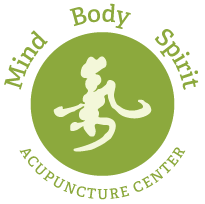Acupuncture as a Treatment for Obesity
Dr. JM Lacey
Mechanisms of Acupuncture
Acupuncture, practiced for several thousand years in China, is increasingly used worldwide in the treatment of many disorders. An accumulating body of evidence summarized in a NIH Consensus Statement on Acupuncture confirms that acupuncture treatment has beneficial effects for conditions ranging from postoperative dental pain to chemotherapy-associated emesis. It is also effective as an adjunctive modality for joint and muscle pain, addictions, and asthma.
Meridians and Acupoints
In Traditional Chinese Medicine (TCM), life force or ‘Qi’ (‘chee’) is thought to circulate within energy pathways or ‘meridians’ longitudinally throughout the body. There are 14 major meridians, corresponding (loosely) to the Western definition of ‘organs.’ Acupuncture points are specific locations on the body considered to be connected to these energy meridians.During illness Qi is thought to be out of balance, and stimulation of acupuncture points corrects this imbalance. Theoretically, an ‘excess’ or ‘deficiency’ of Qi can be ‘normalized’ by the specific manner of point stimulation.
Using this paradigm, obesity and/or excess appetite has been conceptualized in a variety of ways, such as ‘heat’ in the stomach and intestine, a deficiency of Qi in the spleen and stomach, or a deficiency of primary Qi. Based on these beliefs about the causes of obesity, a variety of acupoints are targeted in the treatment of obesity, including: Neiguan (P 6), Fenglong (St 40), Liangmen (St 21), Guanyuan (R 4), Zusanli (St 36), Tianshu (St 25), Quchi (LI 11), where P refers to a lung point, St to stomach, R to kidney, and LI to large intestine.
In terms of traditional medicine, it is believed that acupuncture works to alter central nervous system neurotransmitter levels by stimulating peripheral nerves at acupoints. These stimulated nerves then carry the signals centrally including to the spinal cord, pituitary, and midbrain. Activated centers can then release neurochemicals: endorphins, monoamines, and cortisol.
Methods: Auricular Acupuncture
Auricular (ear) acupuncture is the method most often used for the treatment of obesity.
Common auricular points used in the treatment of obesity include ‘Hunger’ and ‘Stomach’ points (for satiety and fullness) and ‘Shenmen’ (for sedation and analgesia). The external ear (auricle) is innervated by several nerves, including vagus, glossopharyngeus, trigeminus, facialis, and branches (the second and third) of the cervical spinal nerves.The vagus nerve is thought to interact with cranial nerves and those of the digestive tract, as these nerves share a common path to the brain.It is hypothesized that stimulation of the auricular nerve causes interference to appetite signals from the gastrointestinal tract

